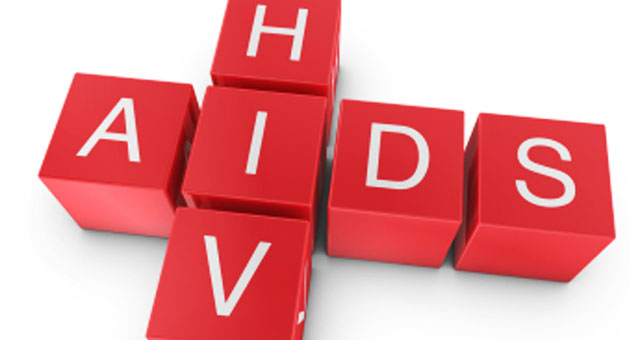
HIV/AIDs is arguably the most talked about sexually transmitted disease in Nigeria (which, by the way, has the world’s second largest number of people with HIV), however many people still don’t know many facts about the disease. Here are some of the myths peddled by ignorant folk followed by the real facts.
Myth #1
There is no need to use a condom during sexual contact if both partners already have HIV.
Fact:
There are different strains of HIV. If a condom is not used during sexual contact, HIV-infected partners may exchange different types or strains of HIV. This can lead to re-infection, which will make the treatment of HIV infection more difficult. The new HIV strain may become more resistant to the current treatment taken, or cause the current treatment option to be ineffective.
Myth #2
Homosexual men and drug users are more likely to get infected with HIV than other people.
Fact:
In Nigeria, 80% of all HIV infections occur through heterosexual intercourse. HIV is spread mostly through unprotected sexual contact and does not discriminate against anyone. It is not who you are but your risky behaviors which put you at risk of HIV infection. Regardless of your personality or sexuality, you will be at risk if you don’t take protective measures.
Myth #3
Getting HIV/AIDS is a death sentence.
Fact:
Although HIV/AIDS has no cure, it can be treated. There has been tremendous progress in treatment for HIV over the years. A person living with HIV/AIDS can now continue to live a strong and productive life for many years.
Myth #4
My partner tested negative for HIV. That means it is safe for us to have sex.
Fact:
An HIV test works by detecting the presence of antibodies in the body that develop when HIV infects the body. But it takes about three weeks for there to be enough antibodies for detection. In addition, to be sure that the individual is completely HIV-free, it is not enough to have one negative HIV test result – the individual would need to take another HIV test at least 3 months after the first one. He or she must also avoid any risky sexual activities in that whole period. If the second test result is negative, the individual is HIV-free and able to have sex without spreading HIV.
Myth #5
An HIV-positive person who receives antiretroviral treatment will not spread the virus.
Fact:
Antiretroviral therapy can reduce the amount of HIV in the body. However, HIV remains in the body and can be transmitted to others.
Myth #6
Faithful and loving partners do not spread HIV.
Fact:
You may think that your partner has been faithful and loving to you, and will not spread the virus. But what if your partner doesn’t know that he already has HIV? A person can be HIV-positive for years without symptoms. Besides, how sure are you about your partner’s sexual history? Also, HIV can be transmitted through non-sexual activities — such as blood transfusions and the sharing of injection needles — regardless of whether he or she has remained faithful. To be safe, use a condom during sex, and get your partner and yourself tested for HIV.
Myth #7
HIV infections can be cured by having sex with a virgin.
Fact:
There’s no cure for HIV/AIDS. However, HIV can be treated and a person who goes on treatment will be able to live a strong and productive life. By having unprotected sex with a virgin or anyone else for that matter, the person with HIV/AIDS can transmit the virus, which is irresponsible.
Myth #8
HIV/AIDS cannot be transmitted during oral sex.
Fact:
Transmission of HIV occurs when there is an exchange of body fluids (such as semen, vaginal fluids, breast milk, blood or pre-ejaculatory fluids), and this is possible during oral sex when there are open wounds. These include cuts, sores or abrasions in the mouth or gums, or infections in the throat or mouth that are inflamed. There may also be abrasions or sores on the penis or vagina. It is best to avoid oral sex if you have any cuts, sores or abrasions, or if you have a sexually transmitted infection. Otherwise, it is advisable to use condoms when engaging in oral sex.
Myth #9
HIV can be spread during contact with saliva, such as through kissing or the sharing of utensils.
Fact:
HIV may be found in saliva, but it is in too small an amount to infect anyone.
Myth #10
HIV can be spread through non-sexual physical contact such as hugging, handshakes, sharing toilet seats, and from mosquito bites.
Fact:
HIV can only be transmitted through an exchange of body fluids. It cannot be spread through physical contact unless you have an open wound which comes into contact with the body fluids (semen, vaginal fluids, breast milk, blood or pre-ejaculatory fluids) of an HIV-positive person. Body fluids such as saliva, sweat and tears cannot transmit HIV. Also, as the virus cannot survive in insects, HIV cannot be transmitted through mosquito bites.
 Quelins – Relationship, Sex, Marriage and Health News around the world Quelins Blog is an online magazine about relationships, love, information about marriage, partnerships and issues patterning to all that.
Quelins – Relationship, Sex, Marriage and Health News around the world Quelins Blog is an online magazine about relationships, love, information about marriage, partnerships and issues patterning to all that.



